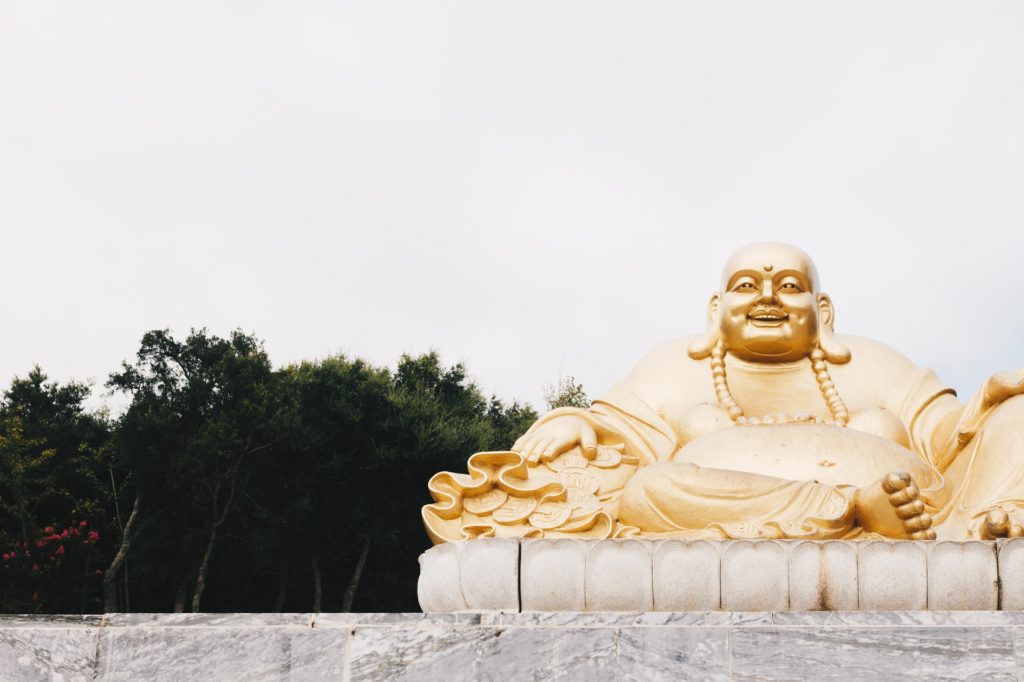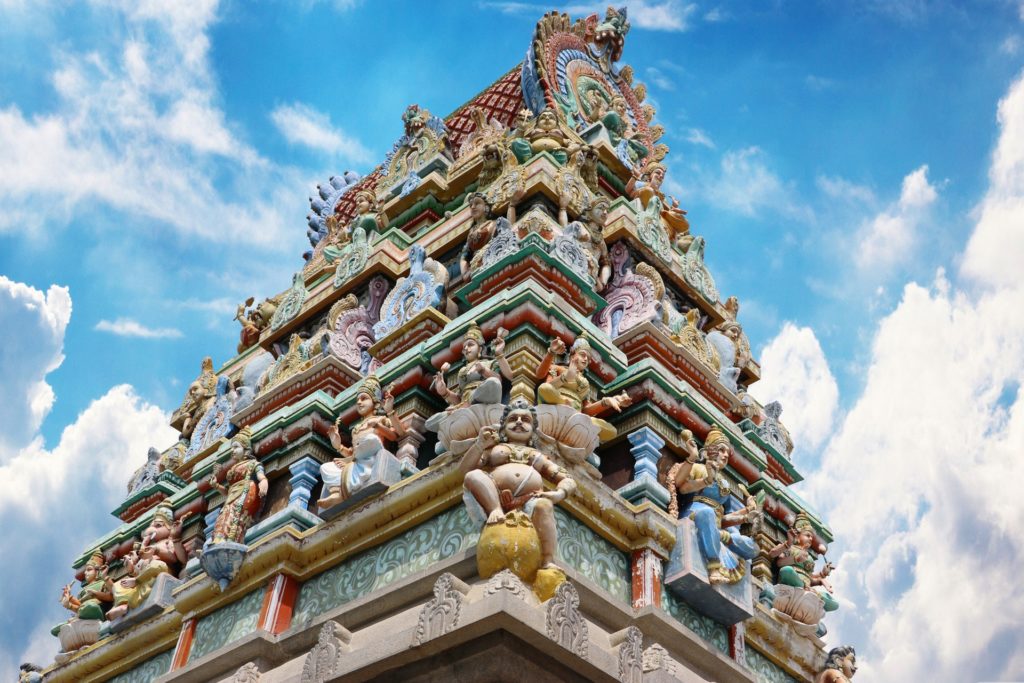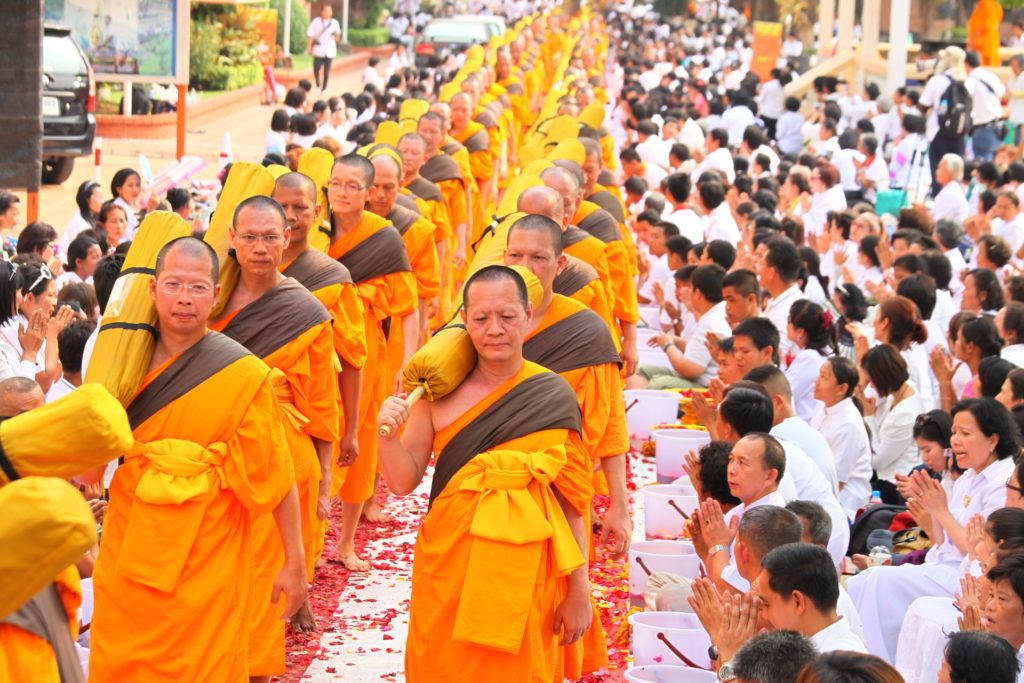
A wide range of meditation practices has developed in Buddhist traditions, but “meditation” primarily refers to the practice of dhyana c.q. jhana. It is a practice in which the attention of the mind is first narrowed to the focus on one specific object, such as the breath, a concrete object, or a specific thought, mental image or mantra. After this initial focusing of the mind, the focus is coupled to mindfulness, maintaining a calm mind while being aware of one’s surroundings. The practice of dhyana aids in maintaining a calm mind, and avoiding disturbance of this calm mind by mindfulness of disturbing thoughts and feelings.
Origins
The earliest evidence of yogis and their meditative tradition, states Karel Werner, is found in the Keśin hymn 10.136 of the Rigveda. While evidence suggests meditation was practiced in the centuries preceding the Buddha, the meditative methodologies described in the Buddhist texts are some of the earliest among texts that have survived into the modern era. These methodologies likely incorporate what existed before the Buddha as well as those first developed within Buddhism.
According to Bronkhorst, the Four Dhyanas was a Buddhist invention. Bronkhorst notes that the Buddhist canon has a mass of contradictory statements, little is known about their relative chronology, and “there can be no doubt that the canon – including the older parts, the Sutra, and Vinaya Pitaka – was composed over a long period of time”. Meditative practices were incorporated from other sramanic movements; the Buddhist texts describe how Buddha learned the practice of the formless dhyana from Brahmanical practices, in the Nikayas ascribed to Alara Kalama and Uddaka Ramaputta. The Buddhist canon also describes and criticizes alternative dhyana practices, which likely mean the pre-existing mainstream meditation practices of Jainism and Hinduism.
Buddha added a new focus and interpretation, particularly through the Four Dhyanas methodology, in which mindfulness is maintained. Further, the focus of meditation and the underlying theory of liberation guiding the meditation has been different in Buddhism. For example, states Bronkhorst, the verse 4.4.23 of the Brihadaranyaka Upanishad with its “become calm, subdued, quiet, patiently enduring, concentrated, one sees the soul in oneself” is most probably a meditative state. The Buddhist discussion of meditation is without the concept of soul and the discussion criticizes both the ascetic meditation of Jainism and the “real self, soul” meditation of Hinduism.

Four rupa-jhāna and four arupa-jhāna
For Nirvana, Buddhist texts teach various meditation methodologies, of which rupa-jhana (four meditations in the realm of form) and arupa-jhana (four meditations in the formless realm) have been the most studied. These are described in the Pali Canon as trance-like states in the world of desirelessness. The four dhyanas under rupa-jhanas are:
- First dhyana: detach from all sensory desires and sinful states that are a source of unwholesome karma. Success here is described in Buddhist texts as leading to discursive thinking, deliberation, detachment, sukha (pleasure) and priti (rapture).
- Second dhyana: cease deliberation and all discursive thoughts. Success leads to one-pointed thinking, serenity, pleasure, and rapture.
- Third dhyana: lose the feeling of rapture. Success leads to equanimity, mindfulness, and pleasure, without rapture.
- Fourth dhyana: cease all effects, lose all happiness and sadness. Success in the fourth meditation stage leads to pure equanimity and mindfulness, without any pleasure or pain.
The arupa-jhanas (formless realm meditation) are also four, which are entered by those who have mastered the rupa-jhanas (Arhats). The first formless dhyana gets to infinite space without form or color or shape, the second to infinity of perception base of the infinite space, the third formless dhyana transcends object-subject perception base, while the fourth is where he dwells in nothing-at-all where there are no feelings, no ideas, nor are there non-ideas, unto total cessation. The four rupa-dhyanas in Buddhist practice lead to rebirth in successfully better rupa Brahma heavenly realms, while arupa-dhyanas lead into arupa heavens.
Richard Gombrich notes that the sequence of the four rupa-jhanas describes two different cognitive states. The first two describe a narrowing of attention, while in the third and fourth jhana attention is expanded again. Alexander Wynne further explains that the dhyana-scheme is poorly understood. According to Wynne, words expressing the inculcation of awareness, such as sati, sampajāno, and upekkhā, are mistranslated or understood as particular factors of meditative states, whereas they refer to a particular way of perceiving the sense objects.
Meditation and insight
The Buddhist tradition has incorporated two traditions regarding the use of dhyāna (meditation, Pali jhāna). There is a tradition that stresses attaining prajñā (insight, bodhi, kenshō, vipassana) as the means to awakening and liberation. But it has also incorporated the yogic tradition, as reflected in the use of jhana, which is rejected in other sutras as not resulting in the final result of liberation. Lambert Schmithausen, a professor of Buddhist Studies, discerns three possible roads to liberation as described in the suttas, to which Vetter adds the sole practice of dhyana itself. According to Vetter and Bronkhorst, the earliest Buddhist path consisted of a set of practices which culminate in the practice of dhyana, leading to a calm of mind which according to Vetter is the liberation which is being sought. Frauwallner notes that the Buddha regarded tanha, “thirst,” craving, to be the cause of suffering, not ignorance. But this was in contradiction to the Indian traditions of the time and posed a problem, which was then also incorporated into the Buddhist teachings. Later on, “liberating insight” came to be regarded as equally liberating. This “liberating insight” came to be exemplified by prajna, or the insight in the “four truths,” but also by other elements of the Buddhist teachings.

The Brahma-vihara
The four immeasurables or four abodes, also called Brahma-viharas, are virtues or directions for meditation in Buddhist traditions, which helps a person be reborn in the heavenly (Brahma) realm. These are traditionally believed to be a characteristic of the deity Brahma and the heavenly abode he resides in. The four Brahma-vihara are:
- Loving-kindness (Pāli: mettā, Sanskrit: maitrī) is active goodwill towards all
- Compassion (Pāli and Sanskrit: karuṇā) results from metta; it is identifying the suffering of others as one’s own
- Empathetic joy (Pāli and Sanskrit: muditā): is the feeling of joy because others are happy, even if one did not contribute to it; it is a form of sympathetic joy
- Equanimity (Pāli: upekkhā, Sanskrit: upekṣā): is even-mindedness and serenity, treating everyone impartially
According to Peter Harvey, the Buddhist scriptures acknowledge that the four Brahmavihara meditation practices “did not originate within the Buddhist tradition”. The Brahmavihara (sometimes as Brahmaloka), along with the tradition of meditation and the above four immeasurables are found in pre-Buddha and post-Buddha Vedic and Sramanic literature. Aspects of the Brahmavihara practice for rebirths into the heavenly realm have been an important part of Buddhist meditation tradition.
According to Gombrich, the Buddhist usage of the brahma-vihāra originally referred to an awakened state of mind, and a concrete attitude toward other beings which was equal to “living with Brahman” here and now. The later tradition took those descriptions too literally, linking them to cosmology and understanding them as “living with Brahman” by rebirth in the Brahma-world. According to Gombrich, “the Buddha taught that kindness – what Christians tend to call love – was a way to salvation.”
Visualizations: deities, mandalas
Idols of deity and icons have been a part of the historic practice, and in Buddhist texts such as the 11th-century Sadanamala, a devotee visualizes and identifies himself or herself with the imagined deity as part of meditation. This has been particularly popular in Vajrayana meditative traditions, but also found in Mahayana and Theravada traditions, particularly in temples and with Buddha images.
In Tibetan Buddhism tradition, the mandala is a mystical map for the visualization process with cosmic symbolism. There are numerous deities, each with a mandala, and they are used during initiation ceremonies and meditation. The mandalas are concentric geometric shapes symbolizing layers of the external world, gates and sacred space. The meditation deity is in the center, sometimes surrounded by protective gods and goddesses. Visualizations with deities and mandalas in Buddhism is a tradition traceable to ancient times, and likely well established by the time the 5th-century text Visuddhimagga was composed.

Practice: monks, laity
According to Peter Harvey, whenever Buddhism has been healthy, not only ordained but also more committed lay people have practiced formal meditation. Loud devotional chanting however, adds Harvey has been the most prevalent Buddhist practice and considered a form of meditation that produces “energy, joy, lovingkindness and calm”, purifies the mind and benefits the chanter.
Throughout most of Buddhist history, meditation has been primarily practiced in Buddhist monastic tradition, and historical evidence suggests that serious meditation by lay people has been an exception. In recent history, sustained meditation has been pursued by a minority of monks in Buddhist monasteries. Western interest in meditation has led to a revival where ancient Buddhist ideas and precepts are adapted to Western mores and interpreted liberally, presenting Buddhism as a meditation-based form of spirituality.
